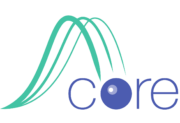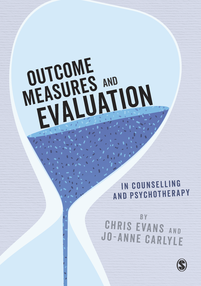[This is information is also avaiable in PDF format.]
Background
The Core System Trust (CST) holds the copyright in the CORE instruments. The instruments have always been free to reproduce on paper provided that they were not changed, that the reproduction was not for profit and copyright was acknowledged.
Until 31/12/2014 CST had licensed a single provider – Core Information Management Systems Ltd (CIMS) – to reproduce the CORE instruments in software. The rationale was that the high initial investment CIMS had to put in to develop the software and the need to provide training and ongoing support to users couldn’t initially be recouped by them on their early limited number of users (themselves mostly poorly funded). CIMS had sub-licensed the reproduction of CORE instruments in software to a number of organisations.
Creative Commons licence
By the end of 2014 CST and CIMS agreed that the widespread usage of outcome measures has matured to the point where any organisation should be free to reproduce CORE instruments in software, as well as on paper. In line with this we placed all the measures into the Creative Commons Attribution-NonCommercial-NoDerivatives 4.0 International (CC BY-NC-ND 4.0) licence. This ensures, in perpetuity that, subject to certain conditions, any CORE instrument can be reproduced in software without payment of any fees, as has always been the case for reproduction on paper. See https://creativecommons.org/licenses/by-nc-nd/4.0/ for a human readable summary of this and https://creativecommons.org/licenses/by-nc-nd/4.0/legalcode for the licence itself.
Conditions summarised
The conditions are
- that the use is non-commercial
- that the content of the measures may not be changed in any way,
- that attribution to the ownership and creation of the instruments by CST be given (ensured by retaining the copyright line at the bottom of each page of all instruments)
What is “non-commercial”?
This is our (CST’s) interpretation of “NonCommercial” and procedure for commercial entities wishing to use CORE instruments
The instruments are all made available for reuse under the Attribution-NonCommercial-NoDerivatives 4.0 International (CC BY-NC-ND 4.0) licence. Our understanding of NonCommercial fits completely with the definition given by Creative Commons. Quoting the pertinent bit from their FAQ is:
CC’s NonCommercial (NC) licenses prohibit uses that are “primarily intended for or directed toward commercial advantage or monetary compensation.” This is intended to capture the intention of the NC-using community without placing detailed restrictions that are either too broad or too narrow. Please note that CC’s definition does not turn on the type of user: if you are a nonprofit or charitable organization, your use of an NC-licensed work could still run afoul of the NC restriction, and if you are a for-profit entity, your use of an NC-licensed work does not necessarily mean you have violated the term. Whether a use is commercial will depend on the specifics of the situation and the intentions of the user.
This means that it’s illegal to make profit simply from providing and reusing any of our instruments or changing them and reproducing them as yours, that bit is easy.
Our motivation is that the instruments be made as readily available to practitioners and researchers at as near zero cost as possible so we are very happy for anyone to put the (unchanged, properly attributed) instruments into software as long as having the instruments there is not the main thing that is enabling profit to be made from sale or licensing of the software. Provided that is not the case and that incorporating the instrument(s) into the software is done without intending to add to any income just by virtue of have the CORE instrument(s) there, then we regard that as compliant with our use of the Creative Commons “non-commercial” clause.
Sometimes people have asked for explicit confirmation of this (typically when the entity creating the software is working for another entity that wants reassurance). If you need this, contact CE explaining carefully what instrument(s) you plan to use, that you understand that any translations must be from the approved translations and that you cannot create your own translation, telling us a bit about your organisation/company and about your product(s) and confirming that putting the instrument into your software won’t be “for profit” for you and committing that you will continue to ensure that this is the case. If you are already using any CORE instrument in software and charge for the software and haven’t had explicit permission from us then we hope you will probably find that your use does fit these requirements but even if that’s marginal or unclear, get in touch with CE and let’s sort out how to make your use legal.
Limitations on changes: what can and can’t be done?
Under the terms of this licence the instruments may not be changed in any way. The object of this limitation is to ensure that scores will remain comparable. It would be a breach of the licence to change any wording of items or response categories and to translate a measure without following our protocol and with our permission. It is definitely a violation of the licence to remove the copyright text:
“© CORE System Trust: https://www.coresystemtrust.org.uk/copyright.pdf”
as that would be ignore a fundamental part of the Creative Commons licensing and is a clear legal issue.
It is not allowed to change the order of the items or to cut any items or add any new items or text. The logic here is psychometric and methodological though it is still a copyright violation to change these things: these restrictions are to optimise comparability of findings using the measures. (But don’t assume that scores from one language transfer to another: that is incredibly unlikely for any similar measure and no translation protocol can ensure it: get local referential data and compare with that and publish your findings so that others can use them.)
I am occasionally asked about removing the small numbers that help hand scoring by identifying the reverse cued items. These show in red for the first column and first three items of the CORE-OM:

As these are likely to influence a subset of respondents we don’t encourage removing them even if the measures are to be scored by the software. We really need some moderately large n studies that look at the impacts of removing these in online or app presentations of the measures and we would like to hear from anyone wanting to do such studies and would give permission to create forms without these score value tips within such a study.
I don’t seem to get asked about removing the “OFFICE USE ONLY” column or the scoring instructions at the bottom of most CORE measures but I suspect that people often do remove these and I suspect that they have little impact on respondents choice of responses so I would authorise removing these if asked. Again, it would be lovely to see an empirical study looking for any effect of removing them: a nice student project perhaps?
Different software, whether online browsers, or apps, create inevitable layout and typographical differences between presentations of the measures, we do not regard these as copyright violations. Equally, where the client and other identification/demographic details that are on the top of the original forms are captured in elsewhere in your data collection systems then this is allowed. If in doubt, do please contact me to check that the changes are acceptable.
We like it if you can keep the CORE logo but we recognise that sometimes services or projects wish to have localisation and perhaps branding on their forms. Provided that the form makes it very clear what content is copyright to CST we generally approve such modifications but they are a breach of copyright if not individually approved so again, contact us to get permission.
Limitations on translations
This really confirms what was said in the last section. Where a translation of an instrument has not already been done to our requirements an independent translation is a copyright violation as it changes the instrument. We are, as we always have been, keen to work with anyone wanting to translate the instruments but this must be done in collaboration with CST and to our quality standards for translations. Contact CE before starting any translation. If you find a translation that is not on the list of approved translations, please notify CE.
What CORE instruments covered by this licensing?
CORE Instruments include the CORE Outcome Measure and all derivative works produced by CST whether by shortening (CORE-SF/A, CORE-SF/B, GP-CORE, CORE-10, CORE-5), adaptation/extension (LD-CORE, YP-CORE) or by approved translations.
Where you might want to go next …
Perhaps the FAQ, the blog … or just search around.
Created for 1/1/15, last update 1/9/25 to further clarify permitted and non-permitted changes. Text and header image (Chartres, France, by CE) released under International (CC BY-ND 4.0) licence.


